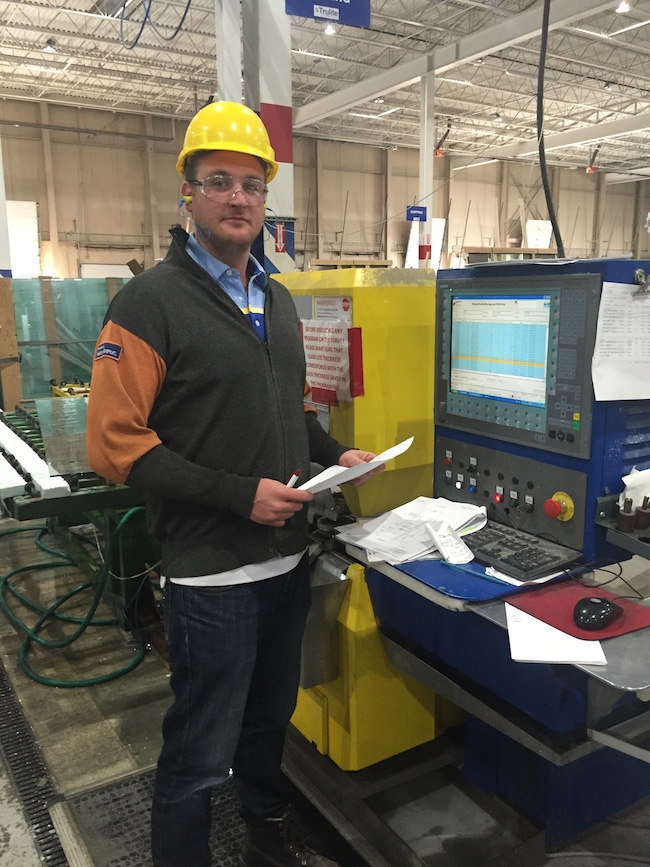
Nov. 28, 2016 – Manufacturing AUTOMATION chats with Andrew Dolphin, production planning manager at Trulite Glass & Aluminum Solutions, to learn how recent automation investments are improving the manufacturer’s Woodbridge, Ont., fabrication and distribution operations.
MA: Tell us about the recent plant upgrades at Trulite Glass & Aluminum.
AD: We are an architectural glass fabricator, and two of the biggest trends we see now in our industry are the automation of tasks and the customization of projects. This creates a bit of a problem because the two don’t really mesh well. In terms of plant upgrades, over the last year and a half, we have installed a second automatic cutting table, a second horizontal CNC for drilling and notching, and added seven new cranes with vision systems for people around the plant. The new cutting table was implemented about nine months ago, the CNC about eight months ago, and the cranes were installed about 15, 16 months ago. Now we have two tables so we’re able to specify what glass goes where. This has really opened up our production and cutting operations, and we’ve seen increases to our square foot per man-hour. Our drilling operations has been significantly boosted too, since before we only had one really big CNC and it required a lot of setup time and this one has really cut that setup time down. Meanwhile, the crane and lifting assist has allowed us to utilize our labour force in a much better way, by giving them various tasks to do instead of just having them lift glass all day.
With regards to glass customization, there have been a lot of changes to code lately, and the most significant one is probably the addition of bird-friendly requirements to the first four floors or 40 feet of a building. This requires patterns on the glass so that the birds can see, and this has resulted in a huge increase in our silk screen business. Architects have turned that requirement, which was meant to be a standard dot pattern, into an opportunity to present custom design features for their building, so everything we’re doing now has to have unique patterns. This makes standardizing the plant a lot more difficult than before.
MA: Describe your job to us — how did you get started at the company and what do you do now?
AD: I oversee quoting, materials, production planning and the shipping department, so my day-to-day responsibilities are really different depending on what’s going on that day. Every morning we review late and upcoming due orders to make sure we are on track for on-time delivery, and we also have supervisor/management production meetings where we go over the production numbers from the day before and safety [best practices].
I’ve been at Trulite for 14 years in total. I started in the summers, working in the shop tempering glass, while I was studying economics at the University of Guelph. I worked here every summer and when I graduated, they offered me a job in production planning and I thought I’d give it a try and have just stuck around.
MA: What do you enjoy most about your job?
AD: My favourite part of my job is that every day is different. Our business is very custom so each order has unique challenges we have to work through. I also enjoy the team environment we have at Trulite — we have many knowledgeable and talented people here. It makes coming in for work a lot of fun.
MA: What advice or words of wisdom would you give to a young person considering a career in manufacturing?
AD: For anyone who wants to go high up in management in manufacturing, I would really recommend they get a huge knowledge of machinery and financials because the majority of the biggest decisions that a company makes typically involves those two areas.
This profile was originally published in the November/December 2016 issue of Manufacturing AUTOMATION.
